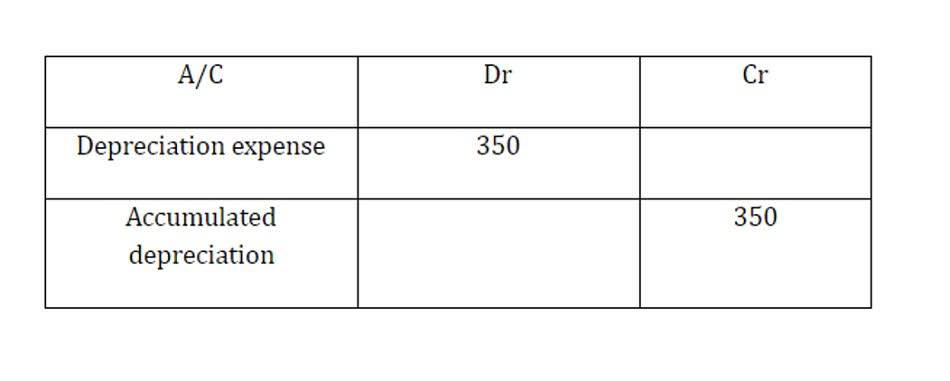
Process costing is beneficial for saving time as calculating costs need not to be completed for each individual unit. The downside is that the costs per unit can become inaccurate since rounding up costs per process can introduce discrepancies. Standard costing is very beneficial for creating and polishing budgets as it gives predefined cost estimates that can be measured against actual expenses.
Calculating Inventory Values
- When done properly, manufacturing accounting reveals hidden inefficiencies, guides strategic pricing decisions, and unlocks profit potential that might otherwise remain concealed.
- Our objective is to provide a comprehensive guide that covers the essential aspects of understanding and analyzing manufacturing costs.
- Distributors, meanwhile, may benefit from services such as inventory turnover analysis, sales tax compliance, and supply chain optimization.
- ERP systems like Sage 100 give your team the structure and visibility needed to make cost accounting part of your daily operation and not just a reporting task at month-end.
- Cost variance analysis is a tool used to assess the differences between actual and budgeted costs in manufacturing.
- Manufacturing accounting is a specialized field that requires a deeper understanding of the industry and its unique processes and costs.
Given that manufacturing also comes under numerous regulations and tax norms, tax accountants and the process of accounting taxes are crucial to a manufacturing firm. It is also important for business owners and accountants to be aware of the best and worst states for business taxes before setting up in a location that maximizes the business value. Tax accounting gives the company’s management an accurate picture of the taxes involved. This ultimately impacts profitability and also provides clarity on the various tax rates that apply to the stages of the production process in the manufacturing firm.
Expert Insights on Best Practices Regarding Manufacturing Overhead – A Closer Look at Manufacturing Overhead
With proper inventory management, you can ensure a steady supply of materials while keeping expenses under control. The software should have the ability to generate financial reports and provide insightful analysis of production performance. Now that we have gained a deeper understanding of the theoretical foundations of the manufacturing accounting process flow, let’s explore how it functions in real-world scenarios. This blog post will explore a range of indispensable tips and proven strategies specifically tailored to the unique challenges of accounting in manufacturing. Whether you possess years of experience in the field or are just beginning to navigate its complexities, these insights will help you ensure your financial operations run smoothly. Manual systems and spreadsheets often create gaps that affect everything unearned revenue from overhead allocation to inventory accuracy.
Mistake #5: Inadequate Financial Reporting
When tracking manufacturing expenditure, it’s important to understand both direct and indirect costs. In addition to per-part inventory costing, it is also important to track the total number of on-hand inventory units. The two common types that inventory can be arranged in light of this are the perpetual and the periodic inventory system.
- This percentage is a key part of the calculation to assign costs to work-in-process inventory, and so can be used to shift costs into or out of the current period to modify reported levels of profitability.
- By doing this, you can work out the labor and material costs to produce a single unit of your product.
- Each step ensures that costs are accurately assigned to products and that financial statements reflect the true status of production.
- For scrap, specify the document type that the system uses to retrieve information from AAI 3210.
- Custom manufacturing uses job order costing to track costs for each individual job or order.
- Costing methods help you turn raw cost data into insights that support pricing, budgeting, and performance tracking.
What Is Process Costing in Manufacturing and Why Is It Important?
Our firm has expertise in industries including manufacturing, construction, real estate, financial services, healthcare, government, education and retail. Incorrect, premature or delayed revenue recognition leads to misstated revenue figures, Mental Health Billing which distort the company’s financial performance and cause cash flow discrepancies. Choosing the right method depends on the nature of your inventory and your business objectives. It’s a strategic decision that can affect everything from financial statements to tax strategies and inventory turnover metrics. Accounting mistakes not only disrupt the analysis process flow but can also lead to severe cash flow problems. Today, manufacturers rely on Enterprise Resource Planning (ERP) systems, automation tools, and real-time data analytics to streamline accounting and drive better decision-making.
By accurately tracking costs and analyzing financial data, manufacturing accounting provides the foundation for effective financial management and control within a manufacturing environment. It involves tracking the quantity and value of raw materials, work-in-progress, and finished goods. Accurate inventory records help businesses optimize production schedules, reduce waste, and improve cash flow.

Standard costing

Financial data can highlight operational problems that might otherwise remain hidden. Consistent variances in material usage might indicate quality issues or training gaps. Rising labor costs could point to outdated production methods or equipment in need of maintenance. One of the most powerful applications of manufacturing accounting is analyzing profitability at the product and customer level. Many manufacturers discover that certain products they’ve produced for years actually lose money when all costs are properly allocated.

Chemical Industry

Beyond simple counts, analytical tools built into platforms like QuickBooks or NetSuite can help analyze trends, forecast demand, and even highlight inefficiencies in your supply chain. Even minor business accounting errors can snowball into significant profitability headaches in the fast-paced manufacturing world. In short, specialized accounting platforms aren’t just about number crunching—they empower manufacturers to optimize operations, respond to market forces, and plan confidently for growth. With the right solution, you’ll have the clarity and control needed to support your bottom line and safeguard your future. When manufacturers treat financial data as a strategic asset rather than just a compliance requirement, they gain a powerful tool for continuous improvement and competitive advantage.
- With the aid of technological advancements and data-driven strategies, manufacturing accounting is essential to optimizing inventory levels.
- It’s important to dig into the reasons behind variances since they could be driven by several reasons.
- This integration eliminates manual data entry, reduces errors, and provides timely information for decision-making.
- Monitoring and reviewing the process costing system is essential to ensuring it is effective and relevant.
For instance, in a car manufacturing plant, the workers on the assembly line would be considered direct labor. In cost manufacturing accounting process accounting, the manufacturing process is often divided into various cost centers or departments, such as cutting, welding, painting, and quality control, to facilitate more precise cost allocation. By following these best practices, manufacturers can improve their accounting processes, leading to better financial management and decision-making. Product costs encompass the total cost of producing an item, including both direct and indirect costs. For example, the cost of a toothpick includes the wood, labor, equipment, security, and utilities.